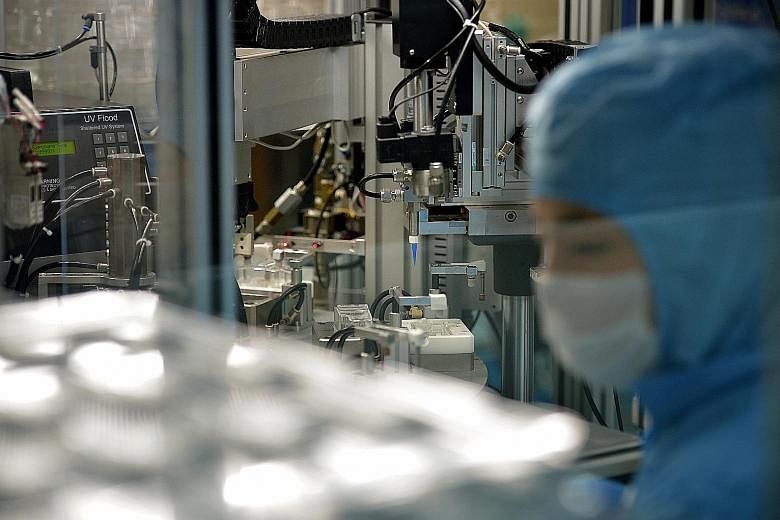Manufacturers have enjoyed a run of strong growth this year but activity in the sector is showing signs of tapering.
The purchasing managers' index (PMI) - an early indicator of manufacturing activity - logged its ninth straight month of expansion in May.
But the reading dipped slightly from the preceding month - coming in at 50.8 from April's 51.1 reading.
A reading of 50 and above indicates expansion.
May's slower pace of growth was attributed to a dip in employment in the sector, as well as slower growth in factory output, domestic and export orders - and inventory levels.
Meanwhile, the PMI for the electronics sector posted a reading of 52.4 in May, indicating that economic activity picked up, compared with April's 51.6 reading.
This was the highest recorded reading since October 2014 and the sector's 10th straight month of expansion.
It comes on the back of higher domestic and export orders, factory output and employment.
Strong global demand for electronics - in particular, semiconductors - has given Singapore's manufacturing sector a shot in the arm since the fourth quarter of 2016.
The PMI data was compiled by the Singapore Institute of Purchasing and Materials Management from a monthly poll of purchasing executives at about 150 industrial companies.
Manufacturing has had a "fantastic run", expanding over the past eight to nine months, noted DBS senior economist Irvin Seah.
He added that "at some point in time, the growth rate would naturally start to ease off".
However, the electronics cluster appears to be benefiting from a second wind, said Mr Seah.
"This is consistent with our view that while consumer demand from China may weaken, higher (capital expenditure by companies) and sustained consumer demand in the US will help to keep the electronics rally going."
A separate survey of manufacturers across Asean also indicated that the sector's growth momentum could be flagging. The Nikkei Asean Manufacturing PMI slipped from 51.1 in April to 50.5 in May, signalling a weaker improvement in the health of the sector.
The pace of growth was the slowest recorded for three months.
Of the seven countries covered, four - the Philippines, Myanmar, Vietnam and Indonesia - saw growth across their manufacturing sectors, down from six in April.
The other three - Malaysia, Singapore and Thailand - registered declining business conditions.
Together they account for an estimated 98 per cent of Asean manufacturing activity. Survey data was collected from a representative panel of about 2,100 manufacturers.
The Philippines overtook Vietnam to become the strongest performer and was the only nation to see operating conditions improve at a quicker pace.
"A key concern is that the upturn has become uneven across the region, accompanied by a slowdown in domestic demand," said Mr Bernard Aw, an economist at IHS Markit, which compiles the survey.
The latest data suggests that growth may lose further momentum towards the end of the second quarter, noted Mr Aw. "If this trend continues, employment prospects across the region are likely to be affected, especially when evidence of spare capacity in the sector is expected to hold back hiring."
Mr Frederic Neumann, HSBC co-head of Asian economics research, said advanced economies seem to have found their footing, but emerging Asia is losing gas.
He is calling this "the Great Uncoupling" - emerging Asia does not seem to be benefiting from the industrial upswing in advanced markets. "Sure, we had a bit of an export bounce the past six months...but that has now washed through: New export orders for emerging Asia were virtually flat in May," he noted.


